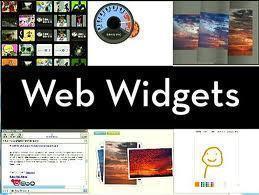Widgets
In the ever-increasing race to create a more user-friendly World Wide Web experience by expanding options for Internet users, the opposite outcome can happen by isolating many users with complex Internet functions, programs, and terminology. So it is nice to see that the Internet user experience is getting easier and less complicated in some ways. One of these ways is with the implementation and use of widgets.
The term “widget” can refer to any icon or graphical interface element that is manipulated by the computer or Internet user to perform a desired function online or on their computer. For example, the icons located on a personal computer’s desktop are considered widgets. By clicking or manipulating the widget in some way with the mouse or keyboard, the user is able to interact with the computer or website, essentially “telling” it to perform desired functions.
User-friendly websites are increasing their use of widgets to simplify and enhance the Internet user’s experience. Buttons, drop-down menus, and basically any other element located on a web page that is able to be manipulated by the user to perform a function is considered a widget. There are hundreds of thousands of people logging on to the World Wide Web for the first time each day. Almost none of them are going to be particularly “tech-savvy” on their first experience so simplifying websites’ usability is imperative.
Some more examples of widgets:
- Stock tickers
- Media player buttons
- Web browser controls
- Email function controls
- Social-networking sites that enable information sharing
- RSS feed icons
- Interactive graphs, charts, and other statistical media
Widgets are typically pieces of programming code embedded in an image file. They can be set up to react to mouse clicks, mouse rollovers, and keyboard commands from the computer or Internet user. Since users demand simplicity with increased functionality, it is important to note that the use of widgets is becoming more widespread and the term encompasses more functions as new methods of user-interface manipulation become available.
Widgets have been strongly embraced by webmasters, web companies, and Internet users that champion the new Web 2.0 format of websites. As Web 2.0 websites grow in popularity, the trend for user experience simplicity and functionality will grow. Widgets will play an ever-increasing role in allowing users to share, store, and create information on the World Wide Web.


Comments - One Response to “Widgets”
Sorry but comments are closed at this time.